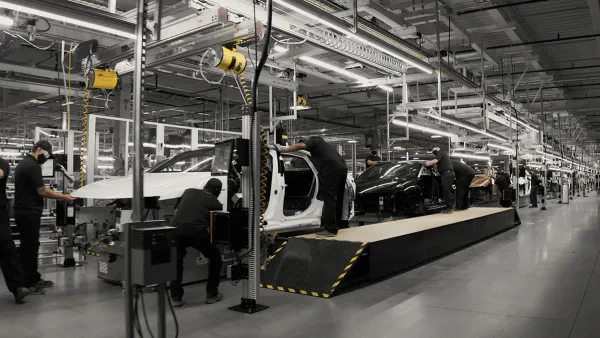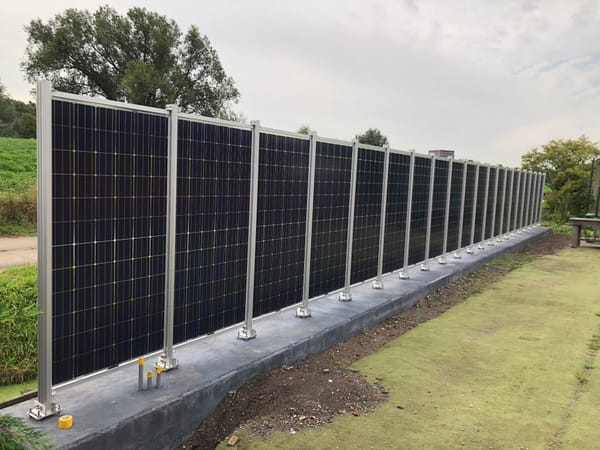Climate change is really all about money
And all negotiations are just about who is going to pay and how much.
Good Afternoon!
Today I moved the newsletter over to a different platform, Substack. I’m hoping to grow this newsletter a bit, and the fact is that Substack has much better referral tools than the old platform I was using. I’m not crazy about how all Substack newsletters look the same, but that seems like a small price to pay.
Today I’m diving down deep into one topic: Global climate change negotiations. They are infinitely complicated, have a very difficult to understand narrative, involve lots of science-y sounding terms, and are weighed down by the United Nations’ propensity to create acronyms and beige terms for everything. Man, what a downer.
But the UNFCCC (another horrible acronym) negotiations have the potential to change the global economy, raise taxes for everyone around the globe, and stop a whole bunch of natural disasters from occurring. Stick with me a bit here. Because it does get kinda interesting…
-Mike

Typically, when you imagine a multi-party negotiation, you think of a few people sitting around a table, talking about a topic they disagree on. There might be alliances, or groupings among the people sitting at the table, but ultimately everyone around the table gets to see each other eye-to-eye at some point, and all the disagreements are tackled, one by one.
That is sort of what global climate negotiations are like and then really not at all.
The main problem is that the world is big, and there’s lots of differing interest groups, with lots of individual problems. For instance, there are 193 parties that take part in the United Nations’ climate negotiations. And then circling around that are literally hundreds of intergovernmental organizations, non-governmental organizations, and what are essentially lobbyists, for oil and gas companies, solar companies, rich guys, and all kinds of hangers on. Well over 3,000 observers go to the climate negotiations, and they’re holding all kinds of side events, parties, exhibits and what have you.
The result is that global climate negotiations are a fracas, with main stories, side stories, and unexpected explosions in discussions because it’s almost impossible to keep track of everything happening at once.
Last week climate negotiators wrapped up their annual pre-meeting in Bonn, Germany. When they were first started over 30 years ago, the two week sessions in Bonn were meant for staff to quietly discuss meeting mechanics a few months before principal leaders meet for the big, annual Conference Of the Parties (COP) at the end of the year. Instead, the Bonn meetings, called the “Subsidiary Bodies” meeting, in typical, non-offensive UN-ese, has become a major circus, as everyone has realized that the pre-meeting is where the action is: You can’t talk about something at COP unless everyone decided to do it at Bonn in the first place.
Occasionally, non-agenda items shake things up. For instance, last year’s COP27 meeting, in Sharm-el-Sheik, Egypt, managed a major, unexpected breakthrough, when rich countries agreed to pay poor countries for “Loss and Damage” resulting from climate change. Still to be decided: How much, when, which rich countries will be on the hook for how much, and who counts as a rich country?
Not surprisingly, the major story this year is that developing countries came to Bonn to ask when their money arrives. Not just for Loss and Damage, but also for climate mitigation, a project where rich countries promised in 2009 to pay $100 billion a year to developing countries, starting in 2020. Last year only $29 billion was pledged, and of that, most came in the form of loans, which isn’t very useful to developing countries already groaning under unpayable loans.
So, discussions in Bonn this month largely went nowhere on financing mitigation, but as the days crawled by that turned into a sideshow, since the Parties (what the UN calls the 193 groups that can vote) struggled to even agree to an agenda for this year’s COP28, set for Dubai, UAE in early December.
Besides the finance issues – which never made it onto the COP28 agenda – countries have been fighting over “stocktake”, a process to assign how much carbon emissions each country will be responsible for eliminating. While the stocktake process has been discussed since 2015, tensions are heightened this year since a multi-year country-by-country report on current carbon emissions is expected to be presented at COP28. At Bonn, a coalition of 135 countries, including China, wanted the COP28 agenda to include a series of specific mitigation measures each county must agree to, while rich counties, including the U.S., U.K., and the European Union, wanted to merely discuss the options, rather than take action.

At loggerheads on stocktake and mitigation, nothing on the issue was added to the COP28 agenda. The topic could still be brought back in Dubai, but it is less likely than if it were agreed to in advance.
Meanwhile, the meeting’s surprise was when U.N. Secretary-General Antonio Guterres announced the COP28 agenda should include setting a date for phasing out all fossil fuels. It’s a particularly sensitive topic this year, since COP28 will be hosted by fossil-fueled UAE, and as such, the president of the COP28 negotiations is from the UAE, Sultan Al Jaber, who also happens to be the president of the UAE national oil company.
Al Jaber swatted down Guterres’ proposal by backing a “phase out of fossil fuel emissions”, which could allow burning fossil fuels, so long as they are complimented by Carbon Capture and Sequestration, a technology that would suck CO2 out of the air, compress, and bury in old oil wells, which is far from ready to scale up. Al Jaber’s proposal has more than a little support from big Western oil companies, and thus the U.S.
But the real fight over climate negotiations at this point is – as it is with most things – who’s money will pay for things?
Funders include an obvious group of “rich countries” like the U.S., European Union and other members of the G-8. But where exactly do the BRICS (Brazil, India, China, South Africa) countries go? What about OPEC countries? Asian tigers like South Korea, Thailand, and Singapore? From the perspective of developing nations, these countries have greatly benefited from either pulling carbon out of the ground or pouring it into the air?
For many of these developing countries, climate change is a very real threat, either in the form of rising seas or dangerous temperatures. For other developing countries, like Congo, Peru, or Indonesia, they need financing for development that doesn’t include carbon emissions or cutting down trees.
So, from these countries’ perspective, about 140 of them, $100 billion a year is small change. Putting a name to it, the Cuban negotiator Pedro Luis Pedroso Cuesta called the $100 billion pledge a “fraud”, and that something on the order of $6 trillion a year was more reasonable. He’s probably not far off, since a 2021 U.N. study backed $1 trillion a year and at COP27, Arab countries suggested $1.1 trillion a year.
Can you imagine the U.S Congress voting to pay $20, $50, $200 billion a year to other countries' climate change fixes? That’s what we’re talking about here. Meanwhile, the E.U. would need to pony up the same amount, and we’d have to see multi-billion dollar annual checks from BRICS and the OPEC countries.
I’m not willing to say it’s impossible, but a whole lot of minds need to change soon if we’re going to get anything done.





